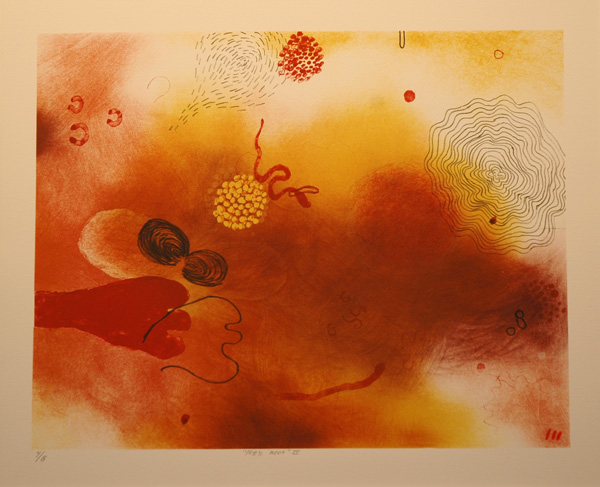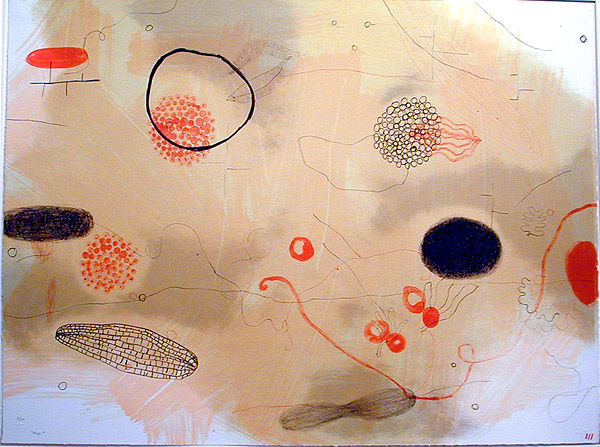Click for BBB rating See our Privacy Policy
Welcome to Spaightwood Galleries, Inc.
120 Main Street, Upton MA 01568-6193
For more information or to purchase, please call 1-800-809-3343 or email us at spaightwood@gmail.com
You can follow us on Facebook at http://www.facebook.com/andrew.weiner.16
and http://www.facebook.com/pages/Spaightwood-Galleries-Inc/122951564441757
Last updated: 6/23/2019
Home / Gallery Tour 1 / Womanshow / Gallery Tour 2 / Artists
Gallery News
Emmi Whitehorse (Navaho, b. 1958): Original Prints
Jennifer Bartlett, Lynda Benglis, Louise Bourgeois, Jonna Rae Brinkman, Louisa Chase, Chryssa / Sue Coe, Susan Crile,
Lesley Dill, Helen Frankenthaler, Jane Freilicher, Nancy Graves, Harmony Hammond, Judy Chicago,
Anita Jung, Elaine de Kooning, Joyce Kozloff, Lee Krasner, Karen Kunc, Ellen Lanyon, Georgia Marsh, Suzanne McClelland,
Phyllis McGibbon, Joan Mitchell, Elizabeth Murray, Judith Murray, Louise Nevelson, Judy Pfaff,
Jaune Quick-to-see Smith, Joan Root, Susan Rothenberg, Betye Saar, Niki de St. Phalle, Hollis Sigler, Kiki Smith,
Joan Snyder, Pat Steir, May Stevens, Dorothea Tanning, and Emmi Whitehorse
In an essay on Emmi Whitehorse, "In the open, under the Surface," Lucy Lippard concludes by placing Emmi Whitehorse: "In the recent work, Whitehorse has traveled into more remote territory, looking through one world into another, still walking in beauty. Now it is as though she were moving backward into time, or leaning forward to see every detail, having heightened the cosmic fusion of microcosm and macrocosm, intimacy and distance, personal and tribal. There is a weightless quality to her images, anchored by the powerfully material tradition of weaving, so deeply ensconced in her own esthetic and psyche. Her paintings seem to catch the momentary pause before these light transparent creatures blow away again. . . . The forms in her new works appear to be pressed upon the retina, mediating between self and landscape, melting boundaries, forming and reforming from one painting to another (Santa Fe: LewAllen Contemporary, n.d.).
There is something haunting about Whitehorse's images: one looks, then looks again, walks on, then comes back. Her works call out to something in their viewers, something they may not be able to name, but which they cannot forget even if they cannot remember a name to call it. In a personal statement on her website, Emmi offers us the following: "As an artist I have intentionally avoided politically oriented subject matter and angst-ridden or physical wrestling with the act of painting itself. To make art, the act of making art must stay true to a harmonious balance of beauty, nature, humanity and the whole universe. This is in accordance with Navajo philosophy. I have chosen to focus on nature, on landscape. My paintings tell the story of knowing land over time–of being completely, microcosmically within a place. I am defining a particular space, describing a particular place. They are purposefully meditative and mean to be seen slowly. The intricate language of symbols refer to specific plants, people and experiences. These images float in and out of awareness. My childhood was spent playing and tending sheep in a landscape that seemed magical and endless. I hope one notices the paintings reflect these sensory impressions of long days passed amid the land's vastness–days spent noticing the subtle fluctuations of light, the perpetual changes in color and the fleeting shift of elements from prominence one moment to obscurity the next. This knowledge has thoroughly shaped my frame of mind. Beginning in 1999, the paintings became more non-referential in imagery, instead relying more heavily on pure sensory response. The new works are about water, about a sense of surfacing from the water, about capturing an elusive ethereal vapor, about capturing liquid mass. Red is the predominant color in much of this work, and while red is not a color usually associated with water, it is in the region where I live and so I use this color. Over time sharp geometric shapes have given way to imagery of animals and birds to a personal alphabet-like cipher or code that has entered the picture plane, but the focus remains the landscape, which has been expanded through my travels here and abroad. My work is about and has always been about land, about being aware of our surroundings and appreciating the beauty of nature. I am concerned that we are no longer aware of those. The calm and beauty that is in my work I hope serves as a reminder of what is underfoot, of the exchange we make with nature. Light, space and color are the axis around which my work evolves."
I do not walk the land, but looking at Whitehorse's art, I begin to have a sense about what it would be like to have a connection like Emmi's to a particular place where rocks and trees and bluffs take the place of the buildings and books that form my mental world and her art becomes an invitation to visit a world in which I have never lived , to image a different kind of live, a different way of living.
Selected Bibliography: Geert De Bruycker and Mathiaas Danneels, The Language of Signs (Antwerp: Galerie Hom'art,1995); Lucy R. Lippard, "In the open, under the Surface" (Santa Fe: LewAllen Contemporary, n.d.), Tisa Rodriguez Sherman with Robert A. Yassin, Emmi Whitehorse: Contemporary Southwest Images XX: The Stonewall Foundation Series, with an essay by Lucy R. Lippard (Tucson: Tucson Museum of Art, 1997).

Light on water. Original color lithograph with hand-coloring, 2001. 120 signed and numbered impressions for the Madison Print Club plus 20 artist proofs. Printed at Bud Shank's Atelier in Colorado for the Madison Print Club. Signed lower right with three vertical red marks, her Navaho name; signed in pencil on the verso "Emmi Whitehorse." Image size: 766x568mm. Price: Please call or email for current pricing information.

Union (T 94-300). Original color lithograph, 1994. 30 signed & numbered impressions on Rives + 10 Roman numbered impressions& 3 Tamarind impressions. Her work is featured in "Presswork" and has been shown in the U.S., Italy, France, Germany, and Switzerland. Signed lower right with three vertical red marks, her Navaho name; signed in pencil on the verso "Emmi Whitehorse." Image size: 305x255mm. Price: NFS.

Leaf (T 97-343). Original 5-color lithograph, 1997. 15 signed & numbered impressions on Somerset + 3 artist's proofs& 3 Tamarind impressions. Signed lower right with three vertical red marks, her Navaho name; signed in pencil on the verso "Emmi Whitehorse." Image size: 279x353mm. Price: Please call or email for current pricing information.

Red Root II (T 97-342). Original 5-color lithograph, 1997. 8 signed & numbered impressions on Somerset + 2 artist's proofs and 2 Tamarind impressions. Signed lower right with three vertical red marks, her Navaho name; signed in pencil on the verso "Emmi Whitehorse." Image size: 279x353mm. Price: SOLD.

Pod (T 97-341). Original 5-color lithograph, 1997. 20 signed & numbered impressions on Somerset + 2 artist's proofs and 2 Tamarind impressions. Signed lower right with three vertical red marks, her Navaho name; signed in pencil on the verso "Emmi Whitehorse." Image size: 560x746mm. Price: Please call or email for current pricing information.
